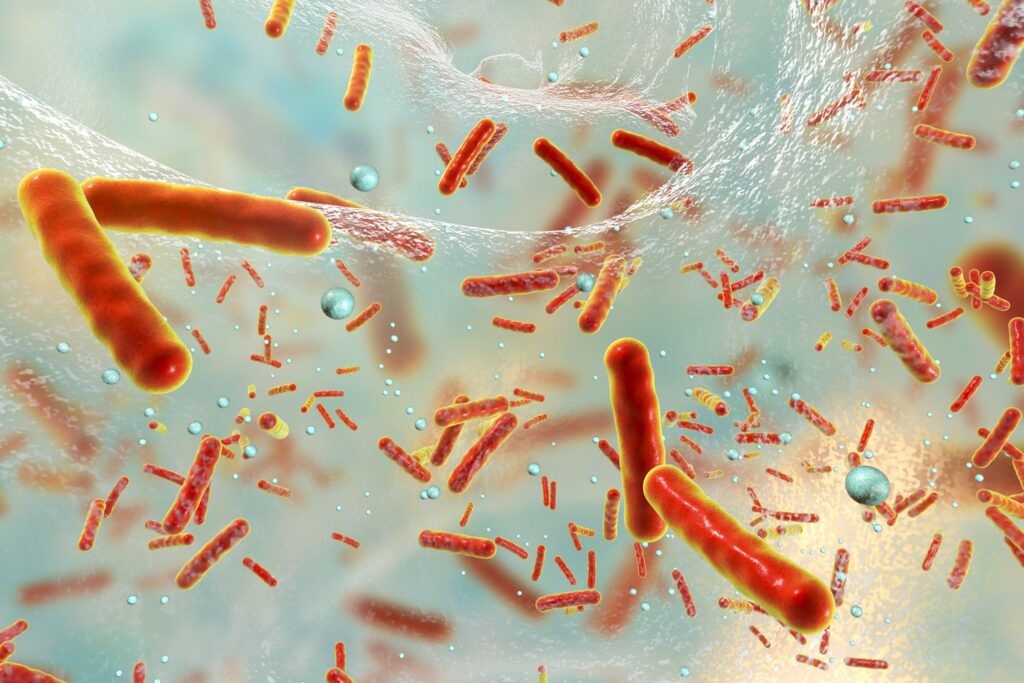When harmful bacteria amass on teeth or in wounds, they often create a tough, slimy barrier known as a biofilm, making them a formidable opponent against conventional treatments. These biofilms act like microscopic fortresses, protecting the bacteria from the effects of antibiotics, making eliminating the infection challenging.
However, a pioneering approach developed by scientists from Stanford University and the University of Pennsylvania is showing promise in tackling this issue head-on without the need for antibiotics.
This innovative method involves using gold nanoparticles, which are tiny particles of gold engineered to attack biofilms effectively. The researchers have devised a way to coat these nanoparticles with sugar, enhancing their ability to target and adhere to the biofilms.
Once the nanoparticles are in place, they can be activated to generate heat and destroy the biofilm structure, thereby killing the bacteria encased within it. This technique not only aids in the breakdown of the biofilm but also offers a way to visually track the process using a unique imaging method.
Luisa Russell, PhD, a leading figure in the research from the Division of Discovery Science & Technology at the National Institute of Biomedical Imaging and Bioengineering (NIBIB), highlighted the significance of this antibiotic-free strategy. “With this platform, you can bust biofilms without surgically debriding infections, which can be necessary when using antibiotics. Plus, this method could treat patients if they are allergic to antibiotics or are infected by strains that are resistant to medication,” Russell explained. She further emphasised the importance of finding alternative treatments that do not rely on antibiotics, given the increasing issue of antibiotic resistance and allergies.
The problem with biofilms extends beyond their resistance to antibiotics. They are notoriously difficult to detect and eradicate, posing a significant challenge in medical and dental care. The researchers sought a solution that could effectively address the detection and elimination of biofilms. They found their answer in gold nanoparticles, known for their biocompatibility and ability to efficiently convert light into heat—a property that can be harnessed for therapeutic purposes.
To optimise the nanoparticles for imaging and therapy, the scientists engineered them into a unique structure that included solid gold spheres and more extensive, cage-like gold particles. This design maximised the particles’ responsiveness to light, making them suitable for detecting and heating purposes. The researchers coated the particles with dextran, a type of sugar that bacteria use to build biofilms, ensuring that the nanoparticles would be readily absorbed into the biofilm structure.
The efficacy of this approach was tested on biofilms formed by Streptococcus mutans on teeth and Staphylococcus aureus in skin wounds, using specimens from rats and mice. The results were promising, with the gold nanoparticles proving to be highly effective in eliminating the biofilms. Maryam Hajfathalian, PhD, the study’s lead author and a professor of biomedical engineering at the New Jersey Institute of Technology, remarked on the speed and efficiency of the treatment, especially for oral infections. “The treatment method is especially fast for the oral infection. We applied the laser for one minute, but in about 30 seconds, we’re killing all the bacteria,” Hajfathalian noted.
The team’s findings, published in the Journal of Clinical Investigation, indicate that this method not only surpasses traditional antimicrobials like chlorhexidine and gentamicin in effectiveness but also does so without harming the surrounding healthy tissue. This aspect is essential, as it suggests that the treatment can be safely applied to living organisms without causing additional damage.
Looking forward, the researchers are optimistic about the potential applications of this technology. They plan to conduct further studies to explore the possibility of using these gold nanoparticles not only to treat existing infections but also to prevent the formation of biofilms, which could have significant implications for preventing tooth decay and accelerating the healing of wounds. Hajfathalian expressed enthusiasm for the future of this technology, stating, “I think it’s important to see how inexpensive, straightforward, and fast this process is. Since we are limited in using antibiotics, we need novel treatments like this as a replacement.”
The innovative approach developed by researchers from Stanford University and the University of Pennsylvania presents a groundbreaking method to combat biofilm-related infections. Utilising gold nanoparticles, this technique moves beyond traditional antibiotic treatments, offering a promising alternative in the fight against antibiotic-resistant bacteria. Its effectiveness in targeting and eliminating biofilms, combined with the potential for real-time treatment monitoring, marks a significant leap forward in medical treatment, with broad implications for future healthcare practices.
Author
Isabella Sterling
Content Producer and Writer
Nano Magazine | The Breakthrough


